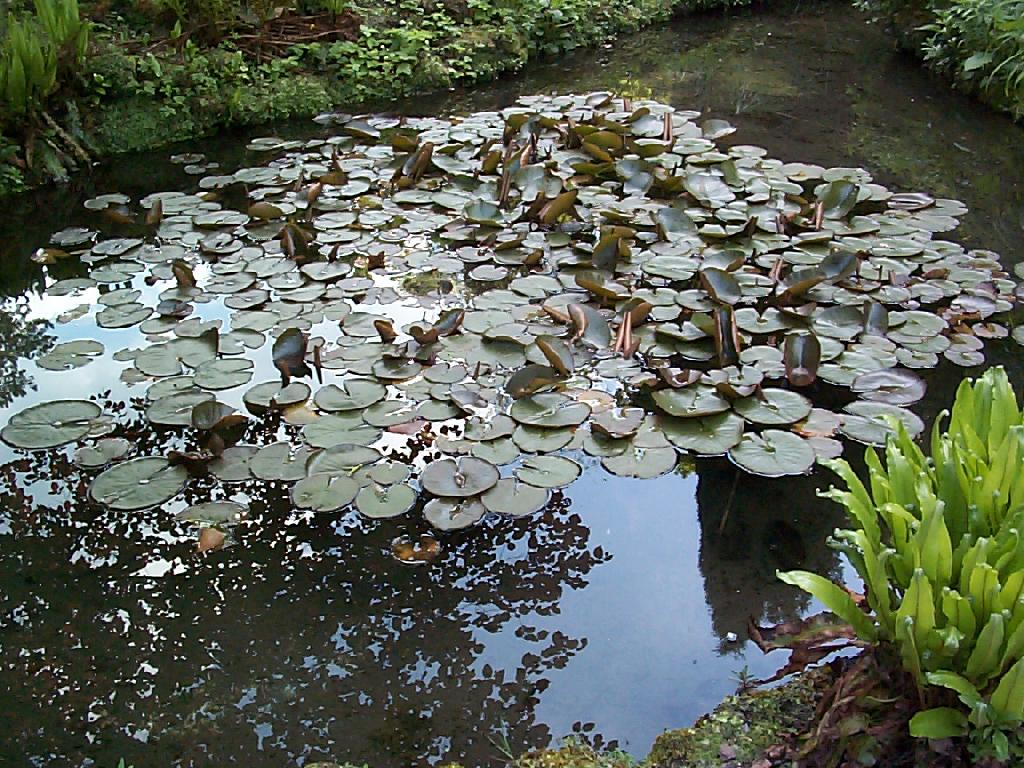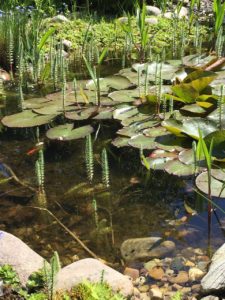Aquatic plants perform an important role in all types of ponds whether in residential or public gardens, obstacles on golf courses or those that make-up the landscape of office parks. There are four important reasons to justify why they are so important.
Importance of aquatic plants
- Enhances the beauty of a pond, adds colour, gives height and bredth
- Keeps pond healthy by balancing the ecosystem. Plants act as a biological filter
- Pond water is kept clear and free of algae by reducing the levels of sunlight
- Creates a wildlife habitat by providing a shelter for fish and other visiting creatures
The best time of the year to plant is mid spring to early summer. It is recommended that you do your research before going out to buy plants. Some aquatic plants grow vigorously and are therefore better suited to big ponds. Planted in a sm all pond and you risk spending a lot of the summer having to cut back to allow sufficient light to your pond. Plants thrive when planted in the right conditions, so always read the labels before making a purchase. Some marginal plants have spiky, sharp roots which could damage a pond liner, even a durable puncture resistant rubber Butyl pond liner could suffer at the root of such aqautic plants. You will also need to invest in the right type of planting basket and soil (pond potting soil is free of fertiliser so that it doesn’t affect the natural balance in the water).
all pond and you risk spending a lot of the summer having to cut back to allow sufficient light to your pond. Plants thrive when planted in the right conditions, so always read the labels before making a purchase. Some marginal plants have spiky, sharp roots which could damage a pond liner, even a durable puncture resistant rubber Butyl pond liner could suffer at the root of such aqautic plants. You will also need to invest in the right type of planting basket and soil (pond potting soil is free of fertiliser so that it doesn’t affect the natural balance in the water).
Types of aquatic plants
Aquatic plants fall into four sub-categories depending on where in the pond they should be planted.
- Bog plants – suited to damp areas to the outer ground of a pond
- Floating plants such as waterlilies give cover to spawning fish and aquatic insects.
- Marginal plants are planted on shelves around the outer periphery of a pond. They are perfect for natural or wildlife ponds providing much needed cover. Popular choices include the Arum Lily, Iris, Lobella and Cyperus (Paper Reed Papyrus). For some marginal aquatic plants the depth of water they are grown in is very important, so read labels and check the requirements before buying.
- Oxygenating plants are planted in the deeper waters of a pond

Plant aquatic plants that are easy to grow and maintain. Try to have a mix as well as variety of floating and submerged plants that suit your pond size. When positioning aquatic plants in your pond it is best not to use a garden fork or stick to aid your planting as you may inadvertantly touch the bottom of your pond and damage the pond liner. A further tip is the take any off cuts of rubber pond liner or geotextile protective underlay to place under your plant basket or boulders used to position your aquatic plants. Protecting the pond liner from damage should always be considered when placing plants in your pond.
One further tip is to ensure the plants you buy are healthy and free of pests or disease. It is advisable to rinse them off under clean water before adding to your pond.





